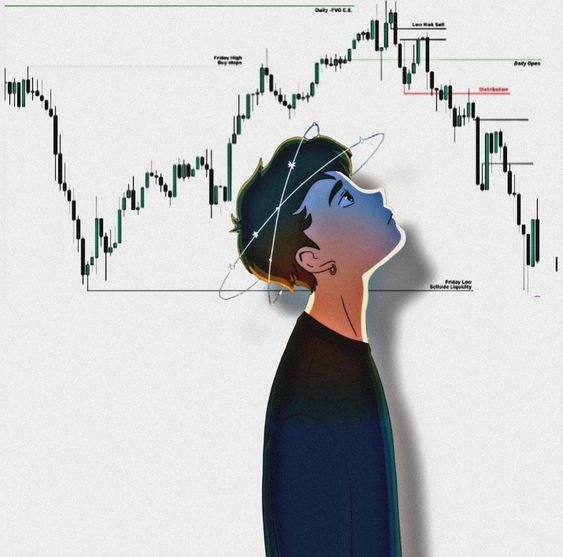The world stock market serves as a barometer of global economic health and investor sentiment, reflecting the collective performance of various stock indices across different regions. On any given day, stock markets around the world experience fluctuations driven by a myriad of factors, including economic indicators, geopolitical events, corporate earnings reports, and investor behavior. This article provides a detailed analysis of the world stock market, focusing on key indices such as the S&P 500, NASDAQ 100, Dow Jones Industrial Average, and major indices from various countries.
S&P 500:
The S&P 500, often regarded as a benchmark for the U.S. stock market, tracks the performance of 500 large-cap companies listed on American stock exchanges. As of the latest update, the S&P 500 stands at 5220.93, experiencing a marginal decrease of 0.22%. The index’s performance reflects the overall health of the U.S. economy, with sectors such as technology, healthcare, and finance exerting significant influence on its movements.
NASDAQ 100:
The NASDAQ 100 index comprises the 100 largest non-financial companies listed on the NASDAQ stock exchange, primarily focusing on technology and internet-related sectors. With a current value of 18160.29, the NASDAQ 100 experienced a slight decline of 0.11%. The index is often considered a barometer of the technology sector’s performance and is closely watched by investors seeking exposure to innovative companies.
Dow Jones Industrial Average (US 30):
The Dow Jones Industrial Average, also known as the US 30, tracks the stock prices of 30 large-cap publicly traded companies in the United States. Despite its name, the index’s components represent various sectors, including industrials, technology, healthcare, and consumer goods. Currently, the US 30 stands at 39467.09, reflecting a modest decrease of 0.15%. The index’s movements are influenced by both domestic and global economic trends, making it a key indicator of market sentiment.
UK 100:
The UK 100, also known as the FTSE 100, tracks the performance of the 100 largest companies listed on the London Stock Exchange by market capitalization. With a current value of 8421.52, the UK 100 experienced a marginal increase of 0.11%. The index’s performance is influenced by various factors, including Brexit developments, economic indicators, and global market trends.
France 40:
The France 40 index, representing the top 40 publicly traded companies in France, is a key benchmark for the French stock market. Currently valued at 8202.45, the France 40 index witnessed a slight decrease of 0.14%. The index’s movements are influenced by factors such as economic policy, corporate earnings, and geopolitical events affecting France and the broader Eurozone.
Germany 30:
The Germany 30 index, also known as the DAX, tracks the performance of the 30 largest and most liquid companies listed on the Frankfurt Stock Exchange. With a current value of 18803.20, the Germany 30 index experienced a moderate increase of 0.22%. The index’s performance reflects Germany’s economic health, with sectors such as automotive, manufacturing, and technology playing significant roles.
Spain 35:
The Spain 35 index, comprising the 35 most liquid stocks listed on the Spanish stock exchange, reflects the performance of Spain’s equity market. Currently valued at 11094.15, the Spain 35 index witnessed a notable increase of 0.42%. The index’s movements are influenced by Spain’s economic indicators, political developments, and investor sentiment towards the country’s economy.
Hang Seng 40:
The Hang Seng 40 index tracks the performance of the 40 largest and most liquid companies listed on the Hong Kong Stock Exchange. With a current value of 18947.87, the Hang Seng 40 index experienced a significant increase of 1.45%. The index’s movements are influenced by factors such as China’s economic policies, global trade dynamics, and geopolitical tensions in the Asia-Pacific region.
Japan NI225:
The Japan NI225 index, commonly known as the Nikkei 225, represents the top 225 companies listed on the Tokyo Stock Exchange. Currently valued at 38204.66, the Japan NI225 index witnessed a moderate decrease of 0.77%. The index’s performance reflects Japan’s economic conditions, monetary policy decisions, and global market trends affecting the country’s export-oriented industries.
AUS 200:
The AUS 200 index, tracking the performance of the top 200 companies listed on the Australian Securities Exchange (ASX), is a key indicator of Australia’s equity market. With a current value of 7753.43, the AUS 200 index experienced a marginal increase of 0.06%. The index’s movements are influenced by factors such as commodity prices, economic data, and global market sentiment towards Australia.
The world stock market comprises a diverse array of indices representing various regions, industries, and economic conditions. While each index has its unique characteristics and drivers, they collectively provide valuable insights into global market trends and investor sentiment. Understanding the dynamics of key indices such as the S&P 500, NASDAQ 100, and major international indices enables investors to make informed decisions and navigate the complexities of the global stock market landscape.
ALSO READ: Steady Returns, Wealthy Future: Embracing Dividend Stocks




